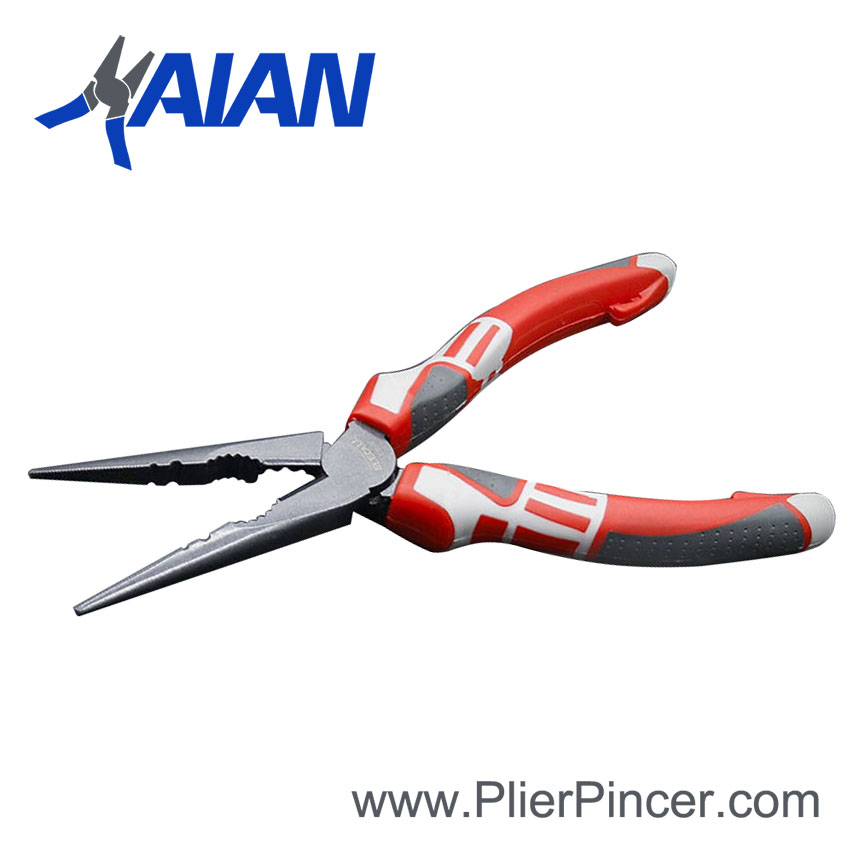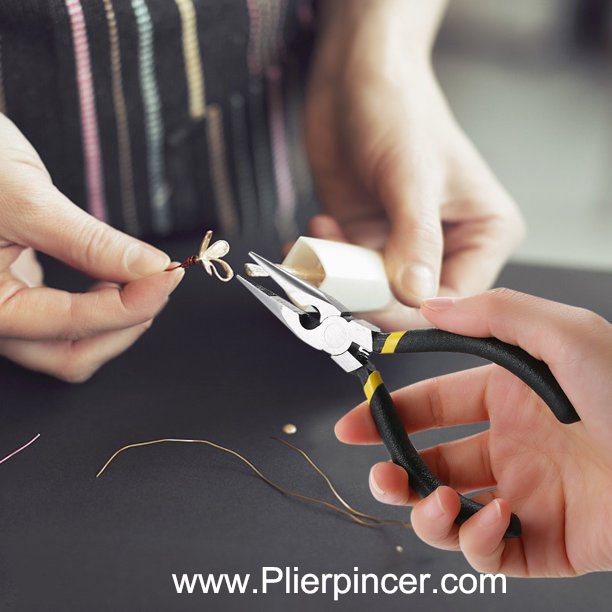Do you know that needle nose pliers are not the same as long nose pliers? Read this article to understand the difference.
The terms needle nose and long nose are used interchangeably to refer to pliers with elongated thin tapered jaws. But do you know that needle nose pliers are slightly different from long nose pliers? Well, in this article, you will learn the key difference between needle nose pliers vs long nose pliers.
What are Long nose pliers?

Long nose pliers are pliers with long tapered jaws but not necessarily pointed. Typically, the jaws are serrated, sturdy, and longer than those of linesman pliers.
In fact, long nose pliers are the best alternative to linesman pliers when working in tight spaces. They have fairly strong jaws and hardened cutters. You can use them to firmly grip objects that are in deep areas that you cannot access with other regular pliers.
There is no predefined length for the jaws of long nose pliers but they definitely have to be longer than those linesman or combinational pliers. The jaws must also be narrow and tapered. Some long-nosed pliers have integrated cutters for cutting soft wires and other materials such as cable ties.
Long nose pliers are electricians’ favorite type of pliers. They use them to manipulate, loop, and grip wires inside electrical sockets. Some electricians even use the integrated cutters on long nose pliers cut electrical wires and strip off insulation material.
Check out this article to learn about other basic types of pliers for electricians.
Needle nose pliers

Needle nose pliers come from the same family as long nose pliers but their jaws are more pointed and narrower. In fact, the pointedness of the jaws and the slim form factor are the only differences between needle nose vs long nose pliers.
Because their jaws have a slimmer profile, needle nose pliers are not as strong as long nose pliers. They can bend or break quite easily when exposed to a lot of twisting or bending force. As such, needle nose pliers are suitable for precision works such as grabbing tiny electronics screws or doing jewelry and artwork.
Unlike long nose pliers that typically have serrated jaws and inline cutters, most needle nose do not have cutters and some have smooth jaws. The smooth jaws are suitable for grabbing delicate objects without leaving marks on the surface.
Needle nose pliers are generally not very strong, which makes them the best for handling delicate tiny objects.
In a nutshell, all pliers with long tapered jaws are types of long nose pliers. Needle nose pliers are the version with the narrowest pointed jaws.
That said, no one will judge you for calling them either needle nose or long nose pliers. These names have already become synonymous and you can’t do anything to change that. But at least now you know there’s a subtle difference between needle nose pliers and long nose pliers. If you want pliers for gripping tiny fragile objects, then you need needle nose pliers. Otherwise, long nose pliers are for general-purpose uses in confined spaces such as gripping fasteners in deep, hard-to-access areas.
